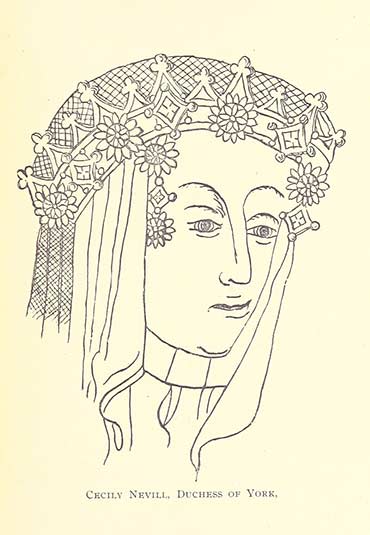Richard III: Discovery and identification
Lines of descent
DNA analysis of the Greyfriars bones was crucial to confirming their identity as those of Richard III. But that analysis would be meaningless without something for comparison. In the rather obvious absence of any known Ricardian DNA, a relative was required.
When the search for Richard III was announced, the University of Leicester received numerous enquiries from people claiming to be related to the late monarch. This is only to be expected: given the number of generations and the large families common in previous centuries, Richard’s mother Cecily Neville could (mathematically) have several million direct descendants today! As Professor Turi King from the University’s Department of Genetics succinctly points out: “We are all related to Richard III. It’s just a matter of degree.”
What did we know when? Genealogy from Anne of York to Michael Ibsen (PDF, 1.2mb)
The known descendant

For the purposes of DNA comparison, a relative was needed whose descent from Cecily Neville was by an entirely female line. Fortunately, just such an individual had already been traced.
In 2003, as part of a project to identify the possible remains of Margaret of York (sister of Richard III and Edward IV), John Ashdown-Hill traced an all-female line of descent from another sister, Anne of York, to a retired journalist in Canada, Mrs Joy Ibsen (née Brown). Mrs Ibsen passed away in 2008 but her son Michael Ibsen, now living in London, very kindly provided a DNA sample as comparison for the Greyfriars project.
With respect to Dr Ashdown-Hill, in order for the University of Leicester to use Mr Ibsen’s DNA as a benchmark, we had to be absolutely sure that the all-female line of descent from Cecily Neville to Mr Ibsen was rock-solid. This task fell to Professor Kevin Schürer, the University’s Pro-Vice-Chancellor for Research and Enterprise.
Much of the early part of the family tree is based on ‘visitations’, contemporary accounts by representatives of the College of Arms on families claiming the right to heraldic insignia awarded to previous generations. Many of these ‘pedigrees’ were collected and published by historians in the late 19th and early 20th centuries.
Building on this earlier work, Professor Schürer’s task was to locate documentary evidence (in the National Archives and elsewhere) for every link in the chain connecting Cecily Neville, Duchess of York (1415-1495) to Michael Ibsen, furniture maker (born 1957). Wills, baptism registers, certificates of birth and marriage and even the passenger list for the SS Mauretania, which carried Joy Brown and her mother to Canada in 1948, together provide inarguable documentary evidence of an unbroken female line of descent.
The unknown descendant
In the course of his research, Professor Schürer identified a second all-female line of descent from Cecily Neville to a living person, again with solid documentary evidence for every step of the way. This individual (who, like Mr Ibsen, had no idea of their royal ancestry) wishes to remain anonymous but has also kindly provided a DNA sample for analysis by Professor Turi King.
Crucially, this second person’s mitochondrial DNA matches Mr Ibsen’s, confirming that they share a common female ancestor many generations back and therefore the genealogy connecting both people to Cecily Neville (and hence Richard III) is accurate.
And one more

Although an all-female line of descent could be used to establish a genetic link with Richard III’s family, another avenue to pursue would be an all-male line of descent since the Y-chromosome is passed unchanged from father to son. Professor Schürer’s genealogical research has traced a number of male descendants of Edward III.
These individuals, who have asked to not be publicly identified, are descendants of Henry Somerset, 5th Duke of Beaufort (1744-1803) who was 15 generations removed from Edward III by an all-male line. Richard III and Edward IV were four generations removed from Edward III by a different all-male line so the Y-chromosome should be consistent.
Male descent is often easier to trace in historical archives where the exploits of men are generally better documented than those of their wives and daughters, but suffers from one obvious potential pitfall. We can always be sure who someone’s mother was, but the identity of their ‘father’ and their genetic male parent do not always coincide, as Y-chromosome analysis can reveal. Genealogy is one area of research where a comment of “Bastard” is not always gratuitous swearing…